Via Emilia. Bologna, the city of gelato
my experience at Carpigiani Gelato University, my favorite gelaterie in town, and a recipe for (vegan) chocolate sorbet
In Italian, the word gelato is the past participle of the verb gelare (to freeze), even though it makes one think of summer heat rather than winter cold. Probably because, one time, Italians used to eat gelato only in summer.
It was so seasonal that even gelato stores closed in winter.
I always preferred the cup to the cone, the paper cup to the waffle one. And I am and was a whipped cream lover. I am not fussy; I eat ice cream too and find it good.
As a child, I waited for the season of strawberries and cherries. Likewise, I waited for the season of gelato.
Early sun-kissed Sunday outings opened the gelato era, which burst on beach holidays that I spent on the roaring, touching, national-popular Riviera Romagnola.
On occasion of the beach vacations, happiness was dual as I sometimes ate ice cream on the beach and, again, during the family evening walk after dinner.
At the beach, I would run from the beach umbrella to the establishment bar, followed by my dad. I would clutch the money tightly in my hand and, as happy as I was, I looked like someone who had won the prize of a lifetime. I put my bare, tanned arm into the big ice cream freezer, shivering with cold and contentment. I usually chose the lemon popsicle (ghiacciolo in Italian), the mint and orange ones didn't appeal to me, while the cola-flavored one was forbidden by my mother.
Alternatively, I used to get the cornetto Algida, an Italian classic that still today I like, or another ice cream with an intensely chemical color and a decidedly synthetic flavor. For both reasons, it was very satisfying for a child who raised on homemade sweets.
The evening gelato was different. I would sit al fresco with my family at the gelateria table, waiting for the waiter. I always chose lemon and whipped cream, sometimes lemon, chocolate, and whipped cream. The moment was perfect if the gelato were served in the metal cup my dad and I particularly liked.
During the long winter season, ice cream used to appear on the table only one memorable time at Christmas lunch. A kilogram of gelato alla crema (egg cream), my sweet Mrs. Eleonora used to make it rich and sumptuous, topped with meringue and baked in the oven for a few minutes. I recently discovered that it also exists in the U.S., not necessarily made with cream, where it is called Baked Alaska. A perfectly fitting name, isn't it?
Returning to the present, I can't say I am a devourer of gelato and ice cream or I always have a stash of it in my freezer. Piadina and small pizzette are never lacking (in my freezer, I mean). Instead, for ice cream, I have to slip on my shoes, walk down the stairs, and open the door to go out into the city of gelato.
Did you know that Bologna has a museum and a university dedicated to gelato?
Bologna, the city of gelato
In addition to many gelaterie, exist a gelato museum and a Gelato University, both founded by Carpigiani. Established in 1946, the company is still the world's largest manufacturer of machines for making artisanal gelato.
The Gelato University is where students, future entrepreneurs, ice cream makers, and gelato lovers, come from all over the world to learn the science and art of making gelato.
Back in 2015, as a student for a day at Gelato University, I learned more about the world of ice cream: from its ancient origins to how it is made. I made a few batches of ice cream, including sorbets. And you know what I say? Filling cone and cup with gelato is a damn hard.
A little bit of gelato history
The Carpigiani Museum is worth a visit. Seriously. You will find historical documents, old tools, and modern and vintage machines. There is much to discover, see, hear, and even touch to immerse yourself in gelato's ancient and fascinating history.
What was already known in Mesopotamia and, later, among the ancient Romans, is the ancestor of our gelato. It was just flavored crushed ice. Still, you had to start somewhere to get to the creamy consistency of today, the same creaminess that also characterizes granita and sorbet (if they are well made).
Gelato was as widespread in the Mediterranean as in the East. Think of Marco Polo in the book dedicated to his journey, which describes the technique for freezing developed by the Chinese. Another anecdote, which, however, has no historical relevance, tells that Muhammad's disciple invented the first freezing system. What is certain is that the Arabs knew this process and created the ancestor of sorbet. I read that during the Arab rule in Sicily, 400 different kinds of flowers were grown in Palermo and used to flavor sorbets.
The Arabic word shrb indicates a sugar syrup. While sharbat, meaning drink and juice (and from which the word sorbet itself seems to be derived), denoted what was little more than a frozen fruit puree.
To find gelato as we know it today, not the same but similar, we have to wait until the Renaissance. The sorbets and gelato recipes collected in the most famous cookbooks of the time were perfected as the centuries passed and the necessary tools appeared.
And as happened for the pasta, it is (again) the Italians who make this wonder known around the world. I leave you with a curiosity that is a gem. In 1770, the Genoese Giovanni Bosio was the first to open an ice cream shop in New York.
The patent for the waffle mold and the invention of the mixing and creaming system, which have made ice cream the product we know, date back to the 20th century and are also the work of Italians.
In 1946, the Carpigiani brothers developed the prototype ice cream machine in Bologna, the Autogelatiera; and founded the engineering company with a sweet heart.
Differences between ice cream and gelato
The basic ingredients for making gelato are eggs, whole milk, cream, and sugar. As I learned at Gelato University, the typology of ingredients, quantity, and preparation method determine whether gelato is industrial or artisanal.
Ice cream
Fluffy, cold, sweet. Ice cream uses a higher proportion of heavy cream, resulting in a higher fat content (at least 10% fat, but often higher). Higher fat content requires a higher churn rate and therefore more air is introduced (ice cream is usually about 50% air); more sugar is added to maintain the taste. Higher air volume gives ice cream a lighter, fluffier texture and requires a higher cooling temperature. Because it melts so quickly, ice cream also takes longer to deliver its flavors to your taste buds.
Gelato
Dense, smooth, intense. Its lower fat content (between 3-7%) allows gelato to be churned slower, incorporating less air (25-30% ), requiring a lower cooling temperature of at least 14C degrees warmer than ice cream. Gelato also uses less sugar compared to ice cream and it allows greater control over gelato's overall sweetness and contributes to its texture. The warmer temperature means gelato's flavor ingredients come across quickly and more intensely than ice cream.
Ice cream versus Gelato
Large production vs small production
Long shelf life ingredients vs fresh ingredients
Stored ice cream vs fresh ice cream
Indirect sales (supermarkets) vs direct sales
The former advertises through TV, newspapers, and social media, while the latter wins the public by word of mouth
My favorite gelaterie in Bologna
You may not know that in Bologna, the crema is the city's typical one. Basically, it's pastry cream turned into gelato.
Yellow as the sun because of the number of yolks and tending (too much, for my taste) to be sweet, it is the most traditional flavor of the cone bolognese. The old Bolognese people measure the goodness of gelato by this flavor.
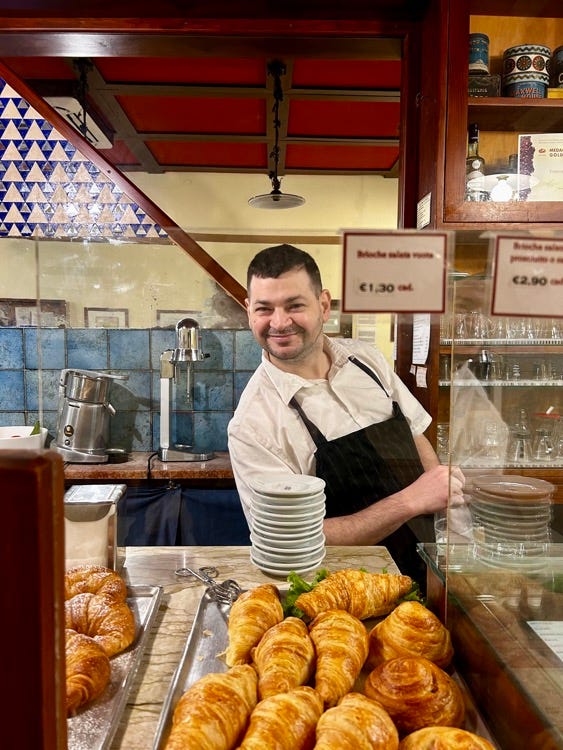

That is my list of the top gelaterie. They are all located downtown except for a couple. The first two are my favorites.
Gelatauro (Via San Vitale 98)
Excellent quality and unique flavors, especially if you love fresh fruit or, conversely, somewhat baroque southern flavors, plus sorbets, and granite. I don't recommend it for traditional crema Bolognese. It is also a bar with a small garden on the back were enjoy gelato. Once, the spot was a bakery, and you can still see the metal door of the old oven.
Cremeria Santo Stefano (Via Santo Stefano 70)
As at Gelatauro, research and seasonality are the keywords. The Sette Chiese (Seven Churches) cream (named after the basilica in Santo Stefano Square) is excellent.
Galliera49 (Via Galliera 49/B)
Gelateria delle Moline (Via delle Moline 13b)
Sorbetteria Castiglione (Via Castiglione 44/D)
Cremeria Funivia (Piazza Cavour 1/D, Bologna)
Outside downtown
Cremeria Scirocco (Via A. Barelli 1c)
Stefino (Via L. Serra 3)
Also
At Carpigiani, you can visit the museum and book a gelato experience.
Via Emilia, 45 / Anzola dell'Emilia, Bologna.
(Vegan) Chocolate sorbet
This sorbet does not contain eggs, lactose, or other types of milk. If you use dark chocolate, it will also be vegan (but don't forget to check the ingredients).
However, you can use whatever chocolate you prefer.
And you don't need an ice cream maker.
Years ago, I bought an ice cream maker.
Once home, I discovered that the instruction booklet with recipes was missing. Quite an essential thing, especially if you have no experience with that small appliance.
In Monica's world, such things are the order of the day.
Anyway, I returned to the store. The saleswoman smiled until she discovered that one last box of that ice cream maker was left. And it was without a booklet. I took the advice to look online for instructions, but couldn't find them.
That's the end of the story of the ice cream maker without a booklet, which today rests peacefully in the garret, the purgatory of objects awaiting a final verdict.
Peace, bread, and love.
I am sure St. Francis would approve my personalization of his wish.
x, Monica
The Recipe
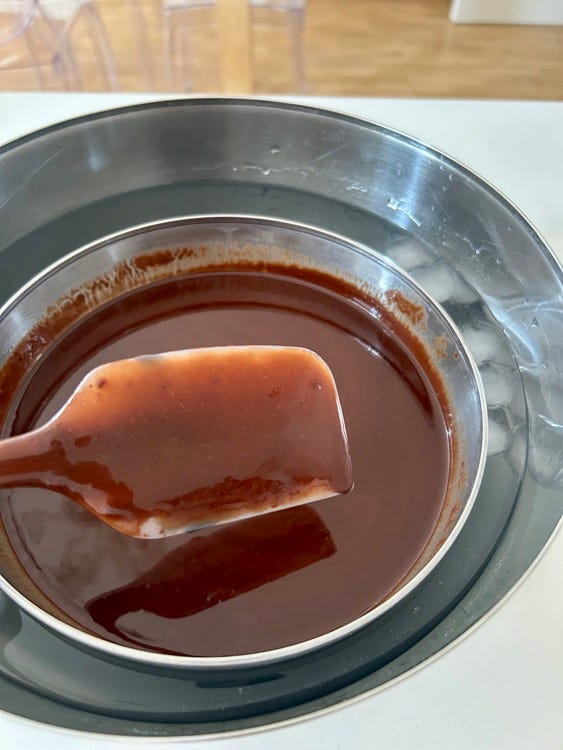
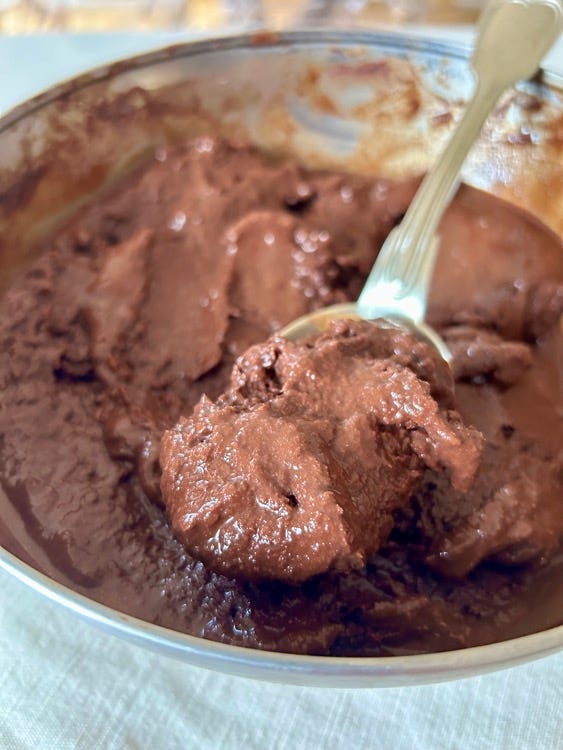
8 serves
(use 400 g of water if you make it for 4 people)
Ingredients
100 g of bitter cocoa
150 g of sugar, caster or cane
1 g of fine salt
700 g of water
200 g of chopped dark chocolate, for me 75 percent
You will also need
a small bowl
a bowl large enough to hold the small one
20 ice cubes
spatula and metal spoon
Method
Pour and stir bitter cocoa, sugar, and salt in a saucepan.
Add the water, stirring to avoid lumps, and then add the chocolate. If lumps form, dissolve them with an immersion blender.
Heat the mixture on a small stove over medium heat. Do not let it boil; after 2 minutes, lower the flame and, stirring with the metal spoon, melt the chocolate. This step takes 5 to 10 minutes.
After all the chocolate has melted, turn up the heat, simmer, and cook for two minutes, stirring.
Turn off the stove and pour the mixture into the small bowl using a spatula.
Pour cold tap water and about ten ice cubes into the large bowl (it does not have to be full).
Place the small bowl inside the large one to lower the temperature. Change the water to cooler water and add more ice cubes if necessary.
Stir with a spatula to help the mixture cool faster.
When the mixture is warm, place the bowl in the freezer.
Stir with a metal spoon every two hours, starting at the edges where the sorbet tends to solidify first.
After 6 hours, it is ready. It is creamy and good beyond words. If you make it in the morning, you can already eat it in the evening.
Tips
If you leave the sorbet in the freezer overnight, do this the next day: Take the bowl out of the freezer an hour and a half before serving. Let the mixture return to softness, then stir vigorously several times. Finally, put it back in the freezer, stirring occasionally, to keep it soft and creamy.
If you have an ice cream maker, proceed per your machine's instructions.

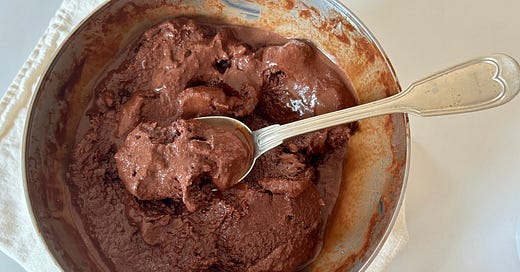



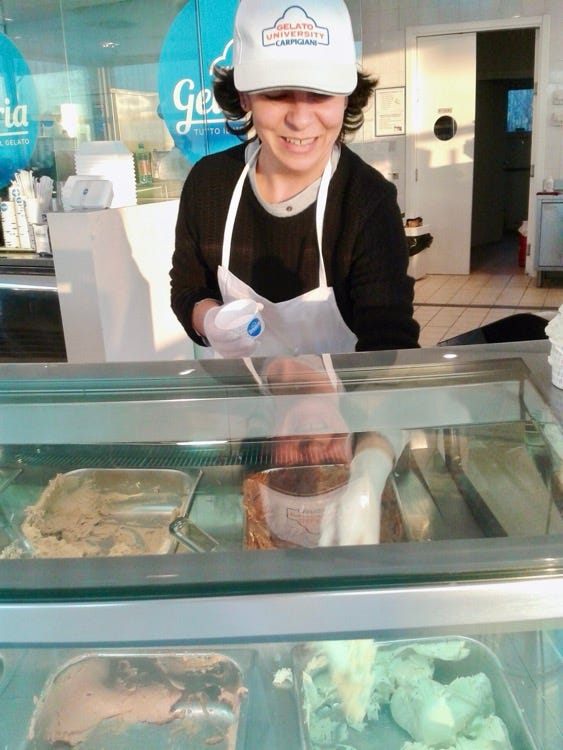
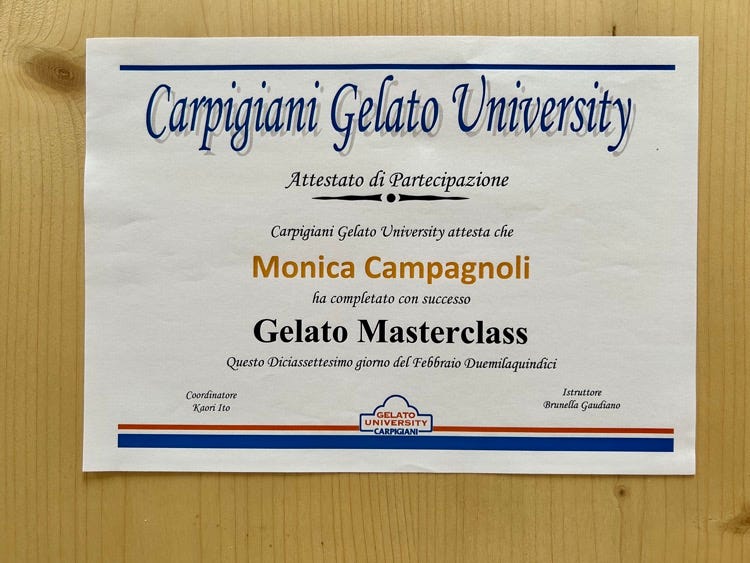
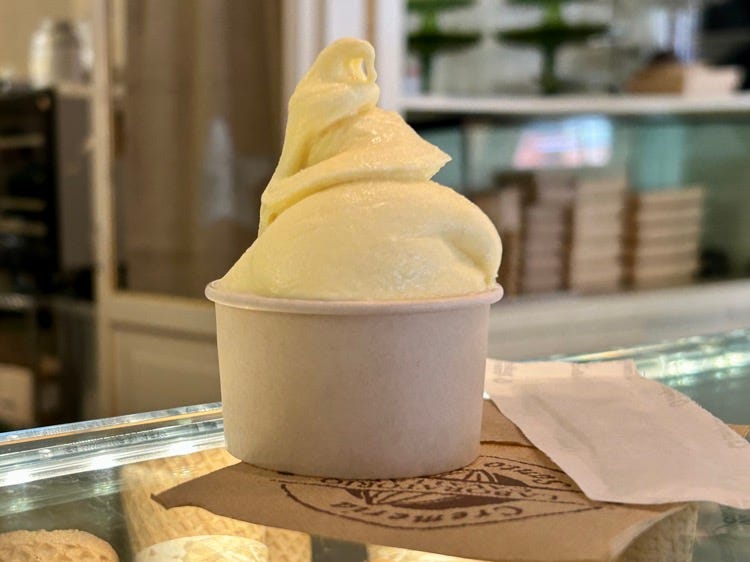
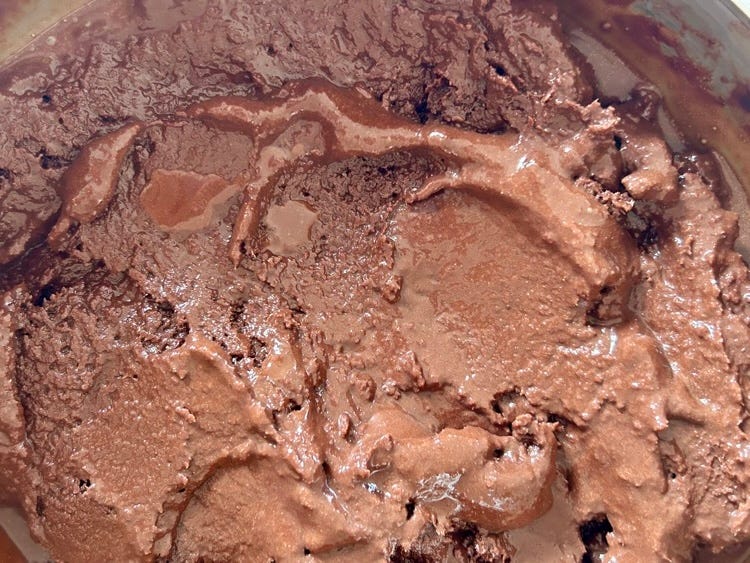
Loved every moment of this post. So informative, transportive, and I feel like I can now speak confidently on the differences between gelato and ice cream when I’ve tried to listen to much longer explanations in the past to do just the same, only leaving more confused!
The last two times we were in Bologna. we went to Gianni for gelato.